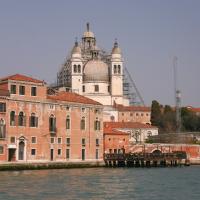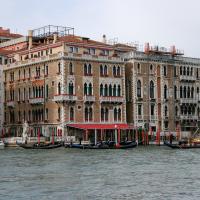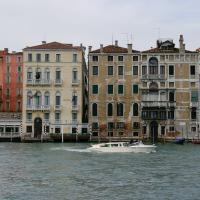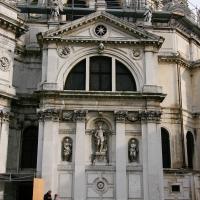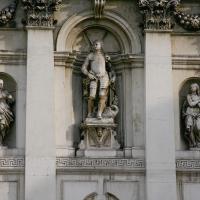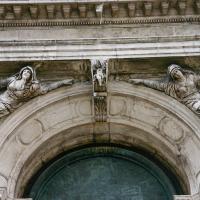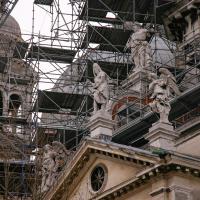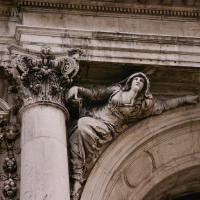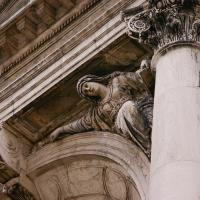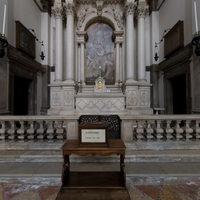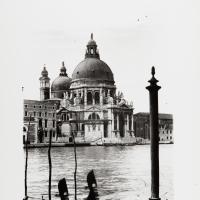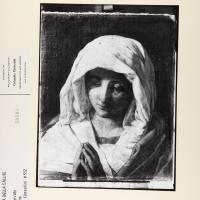Overview
The Basilica of Santa Maria della Salute is built on the former area of the old Ospizio della Trinita, near to the mouth of the Grand Canal and the Dogana (or Customs House). Built to give thanks for the liberation of the city from a terrible plague that had arrived in 1629, the Senate ordered the construction on October 22, 1630. The architect Baldassare Longhena, a student of Scamozzi, was chosen for the project from eleven competitors; he was 26 years old at the time and would live to see the work completed. Though he had other commisions over the course of his career, this was to be his major work.
It has been suggested (never proved) that his idea derived from a fanciful woodcut in Francesco Colonna's Hypnerotomchia (1499). Based on a centralized plan and covered by an enormous cupola, exterior buttresses called orecchioni (for the reverse curvature similar to an ear) ring the octagonal plan. All eight facade sides are decorated with columns, pediments, niches and statues.
Main facade has grander proportions (facing Grand canal) with influence of Palladio clear (from his San Giorgio Maggiore and Redentore works in the city) with massive doorway and pediment; the building is also placed on a raised platform of several steps increases the feeling of grandeur.
On November 21st during the presentation of the Virgin, the Signoria would solmenize the anniversary of the favor by leaving Basilica San Marco in procession and crossing the Grand Canal by way of a pontoon bridge erected for the purpose. This practice is continued today, with the faithful making the pilgrimage to give thanks from the side of San Moise to the Basilica della Salute.
- Lorenzetti, Venice and Its Lagoon: Historical-Artistic Guide (Rome: Istituto Poligrafico dello Stato, 1961) as translated and with supplementary content by Taryn Marie Zarrillo, 2012/13




